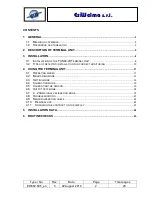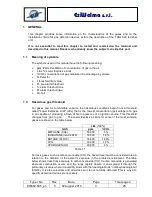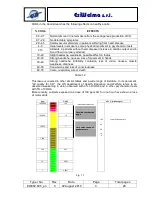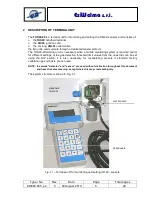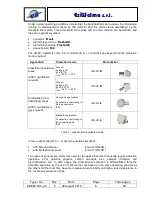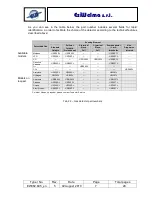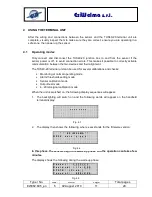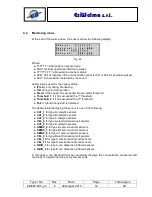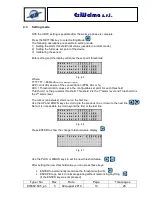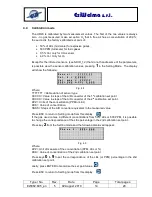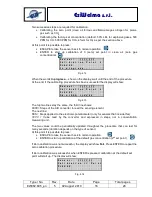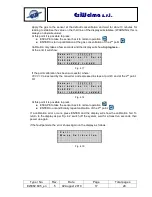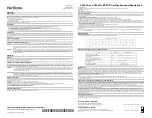
Type / No.
Rev.
Date
Page
Total pages
EW082.695_en
5
02 August 2010
3
28
EsiWelma
s.r.l.
1
GENERAL
This chapter provides some information on the characteristics of the gases and on the
installation criteria for gas detection devices before the description of the TUS40-20 terminal
unit.
It is not essential to read this chapter to install and commission the terminal unit
described in this manual. Readers who already know the subject can skip this part.
1.1
Meaning of symbols
The symbols used in this manual have the following meaning:
•
ppm: Parts Per Million of concentration of gas in the air
•
L.E.L%: Lower Explosive Limit
•
%VOL: concentration of gas measured in percentage by volume
•
D: Detector
•
t: threshold limit value
•
Pr: pre-alarm threshold
•
1t: alarm threshold one
•
2t: alarm threshold two
•
FA: fail
1.2
Hazardous gas threshold
For gases and for combustible vapours, the hazardous conditions begin from a threshold
called "Lower Explosive Limit" (LEL) that is the lowest concentration (percentage) of a gas
in air capable of producing a flash of fire in presence of an ignition source. This threshold
changes from gas to gas. The Lower Explosive Limits for some of the most common
gases are shown in the table below.
LEL (100%)
GAS
ppm
%VOL
METHANE (CH4)
50,000
5%
ISOBUTANE (iso-C4H10)
18,000
1.8%
BUTANE (C4H10)
18,600
1.86%
LPG
19,000
1.9%
HYDROGEN (H2)
40,000
4%
Table 1.1
For toxic gases such as carbon monoxide (CO), the hazard level must be considered also in
relation to the duration of the person's exposure in the polluted environment. The table
below shows risks from exposure to carbon monoxide (CO). Carbon monoxide is generated
wherever combustion occurs and the lungs rapidly absorb it and spread it through the
pulmonary alveolus where it reversibly binds with the haemoglobin as “carboxyhaemoglobin”
(COHb). It is also colourless and odourless so it is not naturally detected. This is why CO-
specific detection devices are necessary.


